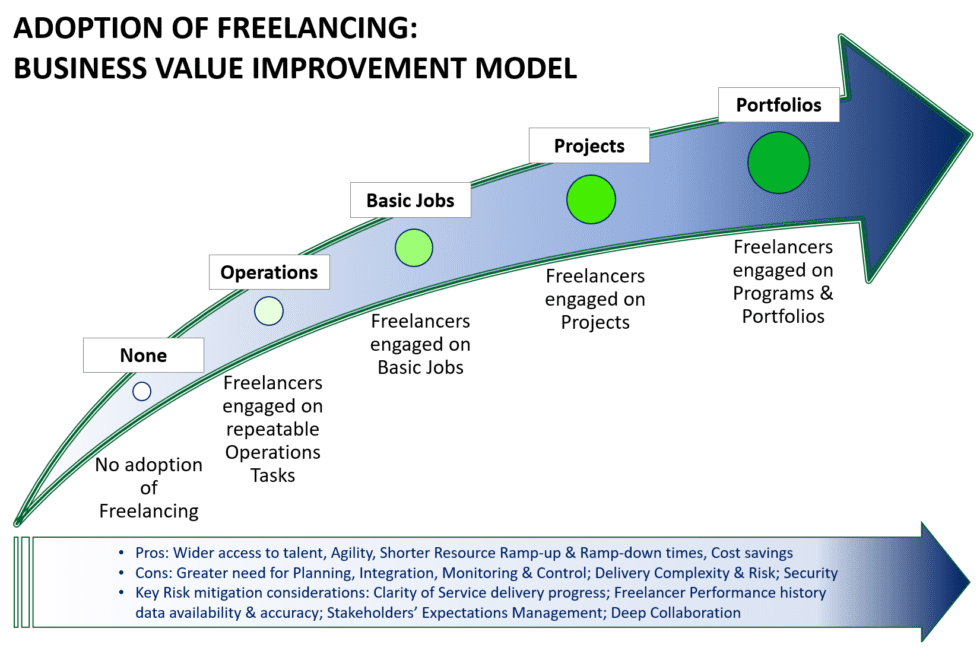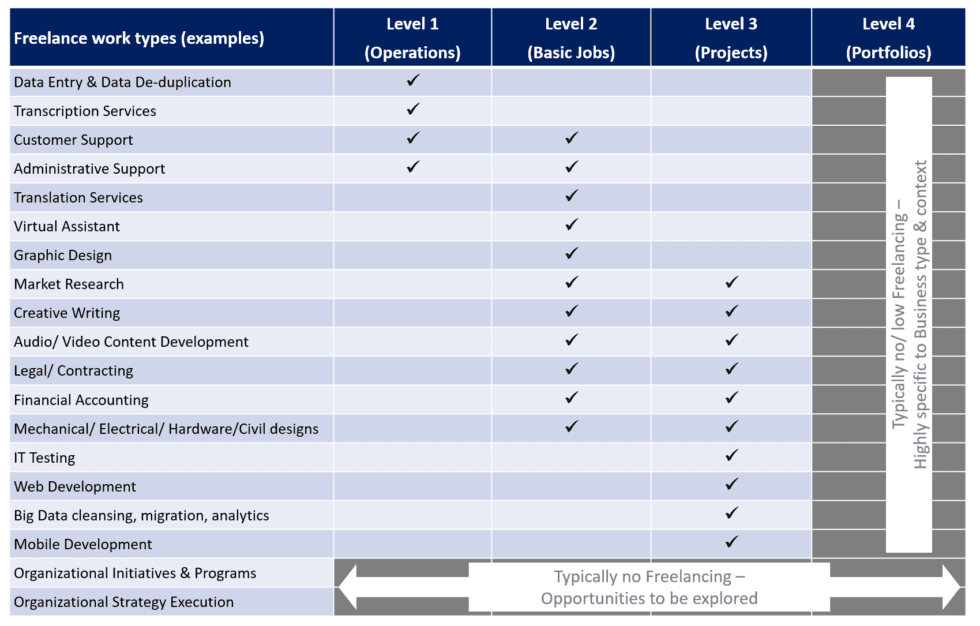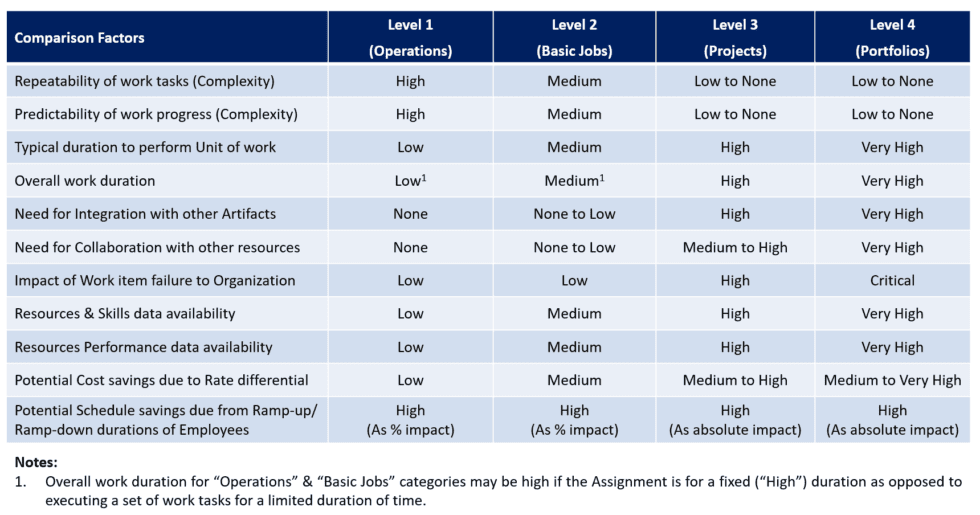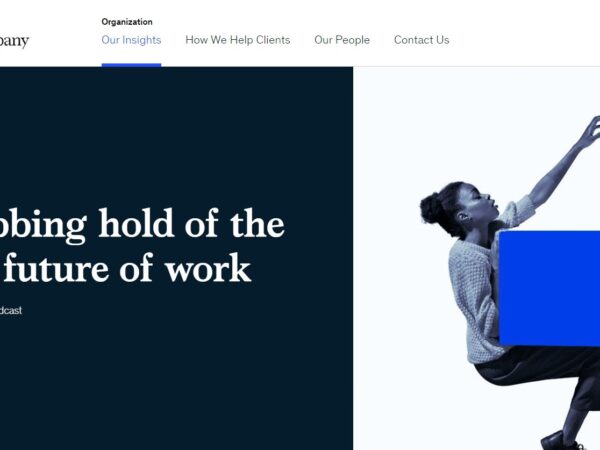Freelancing Business Value Improvement Model — A framework for Businesses to qualify & quantify the adoption of Freelancing, and drive up efficiency and cost takeouts
Cost of Service delivery typically increases exponentially with size & complexity of the work, irrespective of whether the work is performed by the Business directly, outsourced to a Service provider, or freelanced.
Size of work is typically expressed in terms of effort needed (Person hours, Person days, etc), duration needed (Days or Months), or Price (Dollars to be spent) to perform the work.
Complexity of work is typically expressed as a combination of factors such as:
– Size of work
– Number of resources required to perform the work
– Variety of skills needed to be assembled to perform the work
– Previous experience that the resources have, with this type of work
– Technical novelty of the work platform/ work components/ tools used, etc
– The need to integrate with other components or tools, and the number & complexity of such integrations
– Number of internal & external (to Business) teams who would need to be involved in the solution development & execution
– Conflicting priorities of the named teams from above
– Dependencies other than the technological & resourcing risks specified above, etc.
The Business’ capability to efficiently perform a certain work shall be determined by:
– The availability (in-house or otherwise) of business, technical & managerial resources to qualify, execute, verify, & supervise the work
– Available bandwidth as needed, from the above resources, in a timely manner
– The availability & wide-spread adoption in the Organization of various procedures, templates & tools to clarify & enable all aspects of work execution
– The Organization’s prior experience on executing the work type, which would be a strong positive (although not mandatory).
A small/ medium Business should ideally focus on its Core functional spaces in order to stay optimal & effective. It does not have the large wallet that an enterprise may have, to develop & drive excellence in its non-Core Functional spaces. Hence it makes sense for SMBs to outsource or freelance work in their non-Core Functional spaces, where this can be efficiently achieved.
Freelancing Business Value Improvement Model
The below model shows how a Business can qualify its Organizational work streams & drive up Freelancing adoption, driving improvements in talent access, time-to-market, agility, & cost takeout.

As stated in the model, businesses can avail increasing benefits as one progresses up the different levels of freelancing adoption are:
– Wider access to talent, cost-effectively
– Agility of businesses to pivot & drive new channels of revenue generation
– Access talent on-demand, to shorten ramp-up & ramp-down times for resourcing
– Achieve faster Time-to-market through shortened ramp-up & ramp-down times
– Achieve cost savings through more cost-effective talent, as well as by shortening the ramp-up & ramp-down times.
Increasing the adoption of Freelancing, however, would force Businesses to put greater focus on the following areas:
– Need for detailed planning & touchpoints with the team
– Integration of services/ deliverables across the project/ product
– Project risk assessment & mitigation
– Information security & confidentiality, as well as Data privacy aspects.
Work types typically associated with Freelancing, mapped to Freelancing Business Value Improvement Model
The table below identifies the typical work streams associated with Freelancing, and how each work stream can progress up the value chain towards improved talent access, time-to-market, agility & cost takeout.

Risk assessment at different levels of Freelancing adoption
The below table documents an assessment of risk level associated with each named level of Freelancing adoption, from the point of view of different comparison factors. This framework can be used by Businesses to assess their own risk, and if needed, develop its Risk mitigation strategy to contain the impacts of the risks identified.

Conclusions
Adoption of Freelancing is definitely one way that Businesses can take out costs. Technological & Management Methodology advancements are enabling improved engagement of remote teams & control of remote work. However, this comes with added challenges in the areas of planning & control, productivity, teaming & engagement, innovations, confidentiality, etc.
Hence Freelancing platforms have to be ready to support Businesses in addressing the risks in these areas. And Businesses would have to take a leap of faith to increase their Freelancing adoption, and work with Freelancing platforms to ensure that they have mechanisms in place to address risks, so as to take advantage of the benefits offered, such as improved Talent access, faster time-to-market, and cost takeouts.
We are at a pivotal point in the evolution of work & #Futureofwork, as the world embraces freelancing to a significantly greater extent. The last time that we hit this pivotal point was in the 1990s, with the increasing adoption outsourcing, and its now time to move onwards.
Bon voyage !
Have you read the previous part (2 of 3) of this article: Internal & External factors for assessing your preparedness for increasing Freelancing adoption ?



